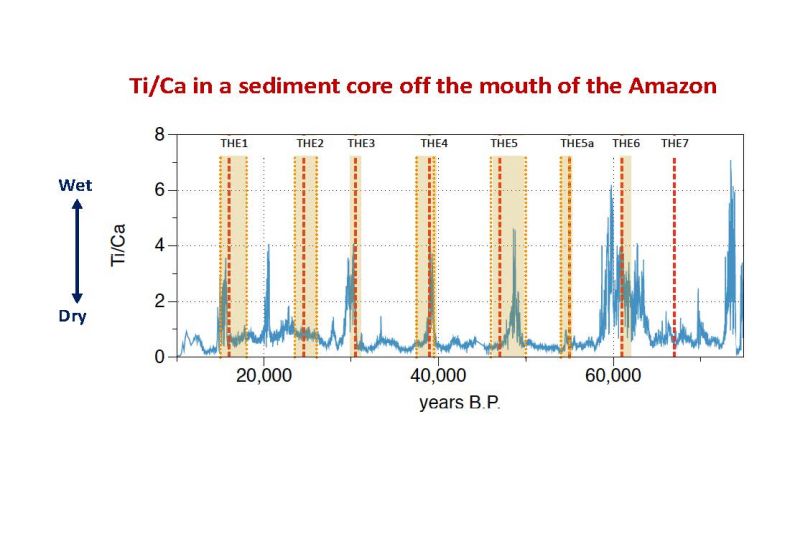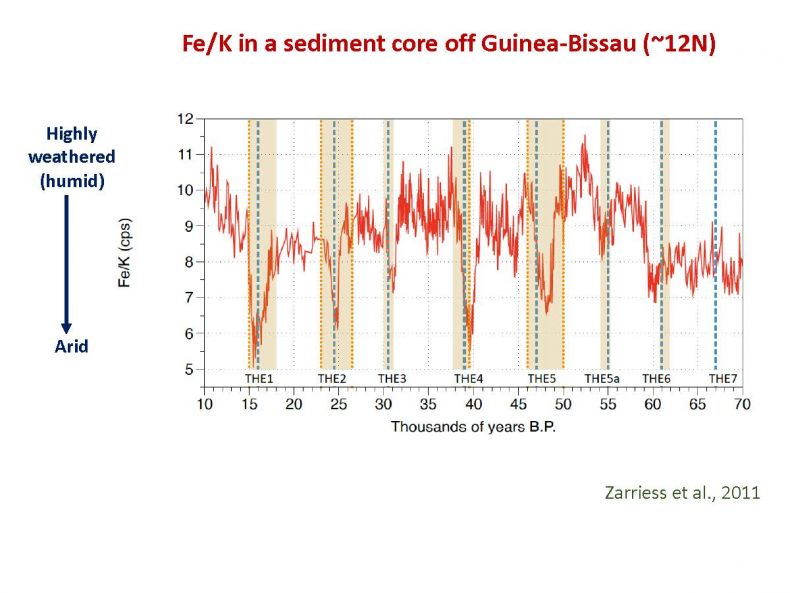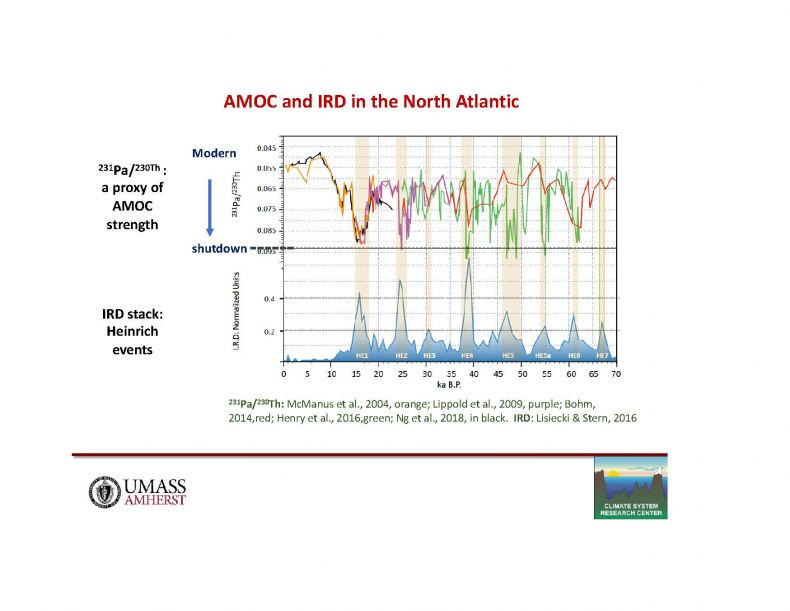The author(s) will give a talk
Icebergs and tropical rainfall
1 University of Massachusetts
2 University of Hawaii
Tropical hydrological events, characterized by extreme regional rainfall anomalies, were a recurrent feature of marine isotope stages (MIS) 2-4 and involved some of the most abrupt and dramatic climatic changes in the late Quaternary. These anomalies were pervasive throughout the Tropics and resulted from the southward displacement of the Hadley circulation and the Intertropical Convergence Zone and its associated convective rainfall.
Lake sediments, stalagmites and offshore marine sediments that integrate inland continental conditions provide a comprehensive record of changes over the past~70,000 years. Within the uncertainties of dating, tropical rainfall anomalies occurred very close in time (±102-103 years) to the deposition of North Atlantic ice-rafted debris (IRD) that defines Heinrich events. Even though there may have been considerable amounts of freshwater entering the North Atlantic --without any associated sediment-- prior to the release of sediment-loaded icebergs from calving glaciers, the IRD record is in fact a good proxy for the amount and distribution of additional freshwater forcing which was necessary to bring about a drastic reduction in the Atlantic Meridional Overturning Circulation strength during each HE.
As a consequence of this reduction in AMOC and an abrupt expansion in the area of sea-ice, cooling of the North Atlantic and adjacent continents took place, with a rapid atmospheric response involving the southward displacement of the ITCZ and associated rainfall belts. The climatic consequences of this large-scale change in the Hadley circulation, modulated by regional factors, is clearly recorded throughout the Tropics as a series of abrupt and anomalous hydrological events.
Bradley, R.S. and Diaz, H.F. 2021. Late Quaternary abrupt climate change in the Tropics and Sub-Tropics: the continental signal of Tropical Hydrological Events (THEs). (in review)

Fig 1.
Ti/Ca ratio for marine sediment core CDH 86, off the mouth of the Amazon River (0.3°N, 44° 12.2°W). The Ca is derived from biogenic CaCO3(mostly from pteropods, foraminifera, and calcareous nannoplankton)whichis assumed to have been relatively constant over time.High ratios thus indicate that higher amounts of clastic material were delivered to the ocean during times of relatively dry conditions in the continental interior(adaptedfrom Nace et al., 2014). Red lines denote peak times of IRD

Fig 2.
Ratios of Fe/K in a sediment core from off the coast of Guinea-Bissau (~12.5°N). Higher values of Fe/K indicate wetter conditions as the more weathered rocks in humid tropical regions contain more Fe relative to the more mobile potassium. The low values that punctuate this record thus indicate much drier conditions in the continental interior as the ITCZ and associated rain belt shifted southward and Trade winds delivered dust from the arid interior of the western Sahara. Grey shading denotes the timing of Heinrich events in the North Atlantic (modified, from Zarriess et al., 2011).

Fig 3.
231Pa/230Th in several North Atlantic sediment cores; values of >0.093 (dashed black line)represent a complete cessation of North Atlantic deepwater formation(note dataare plotted inversely; from McManus et al., 2004, in orange; Lippold et al., 2009, in purple; Bohm, 2014, in red; Henry et al., 2016, in green; Ng et al., 2018, in black, 9-point running mean). Lower blue line is the stacked record of IRD based on 15 North Atlantic cores (normalized values, from Lisiecki and Stern, 2016). Shaded brown intervals indicate times when IRD exceeded median values for MIS2-4.